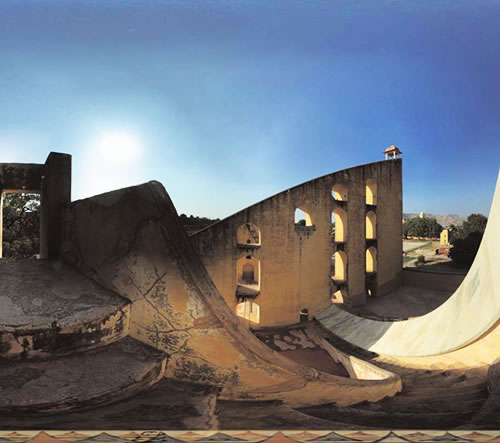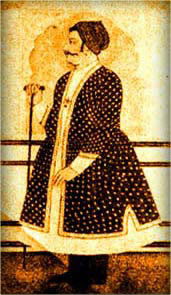How Long is a Year in
Vimsottari Mahadasa?
1 2 3 4 5 6
Shyamasundara Dasa
Copyright © 1998 - 2017
This article originally appeared in October and November, 2000 edition of The Astrological Magazine, Bangalore, India. This article discusses the controversy as to how long a year should be in the calculation of Vimshottari and other Mahadasas. Get the PDF version of this article in English, German, or Russian. (Right-click to download.) Free Adobe Acrobat reader required to read this.
The following are typical questions from my students:
The question is about mahadasa-periods calculation. I noticed that there are two possibilities, namely 360 and 365 days-per-year. I heard some Vedic astrologers saying that it works best with 360 day/year. Also Srimad Bhagavatam mentions 360 day/year. On the other hand I've seen some astrologers use 365 day/year (like yourself, Asutosh Ojha, Arkasomayaji - all in Prabhupada's horoscope analysis).
Can you tell me the reason for this difference? What is by your experience, the proper method? Why is there a difference at all?"
Another argument has been put forward for following 360 days/year for calculating the Vimsottari Mahadasa. This was sent to me by a student in Australia:
"I once had a conversation with a jyotishi here in Australia who told me he uses the 360 day calendar as opposed to the 365 day calendar when calculating Vimsottari dasa. His argument was, why should we use a solar based calendar for calculating a lunar based dasa system?"
This issue of 360 versus 365 day/year for calculating Vimsottari Mahadasa has caused a lot of confusion and unnecessary ink to flow. But it wasn't always this way, it has only become an issue in the last 100-150 years. The reason why it has become an issue, and what the real situation and solution is will become clear as we explore this controversy. Let us begin by pin-pointing what the actual issues are and then answer them:
- What is the significance of 360 versus 365 day year?
- What is the basis for determining time?
- How is the year measured?
- Is there more than one type of year, if so what are they?
- What is meant by reference to 360 and 365 day/year?
- Is the 360 day year advocated for Mahadasa usage some how "Moon" related and the 365 day year "Sun" related?
- What is the relationship between the Solar and Lunar year?
- How were calendars prepared by astrologers in pre-British India?
- How long was a year for Mahadasa calculations according to classical texts?
- Does using 360d/y give “better” results than using 365 d/y?
In the following discussion I will often call the solar year the 365 day year, but actually it is about 365.25. I shall occasionally round it off to 365 for convenience.
Subscribe to our mailing list. And get our intermittent newsletter and updates to this site.
What is the significance of 360
versus 365 day year?
If we were to use a 360 d/y rather than a 365.25 d/y, for mahadasa calculations after some time they would become more divergent. After one year they would only be different by five days, but in six years it would be a gap of 31.5 days (counting leap years). After 35 years it would be about six months out of phase and after 70 years a whole year out of phase. Thus the older the person got the farther out of phase the mahadasas would be. Thus using the 360 d/y, Jupiter mahadasa may start at age 35 but at age 35y 6m using the regular year of 365 days. This would introduce serious difficulties in timing events especially in regards to the Bhuktis. This difficulty would only increase with age.
What is the Basis for Measuring Time?
How is the Year Measured?
Of all the Rishis who received knowledge of astrology, Parasara Rishi is considered the most important and is called the father of astrology because in Kali-yuga only his work has survived and is followed by others. His text Brhat Parasara Hora Sastra is a dialogue between Parasara Rishi and his disciple Maitreya Muni. In Srimad Bhagavatam 3.8.8-9, Maitreya explains to Vidura how Parasara learned the Srimad Bhagavatam and in turn taught it to Maitreya.
Why is this important in a general discussion of the controversy over whether the year in Vimsottari Mahadasa is a 360d/y or 365d/y? The answer is that three chapters later in Srimad Bhagavatam 3.11, Maitreya, the great devotee-astronomer-astrologer (and disciple of Parasara), explains to Vidura how time is measured in the chapter entitled Calculation of Time, From the Atom. In this discussion, of which relevant portions will follow, we shall see that the motion of the Sun is the basis of measuring time. This has been accepted by all the Rishis and is reflected in such astronomical texts as Surya-siddhanta and Siddhanta-siromani and can be seen in the ways in which the Vedic calendar, though lunar, is calculated. More will be mentioned about the Lunar calendar being dependent on the Solar year later.

